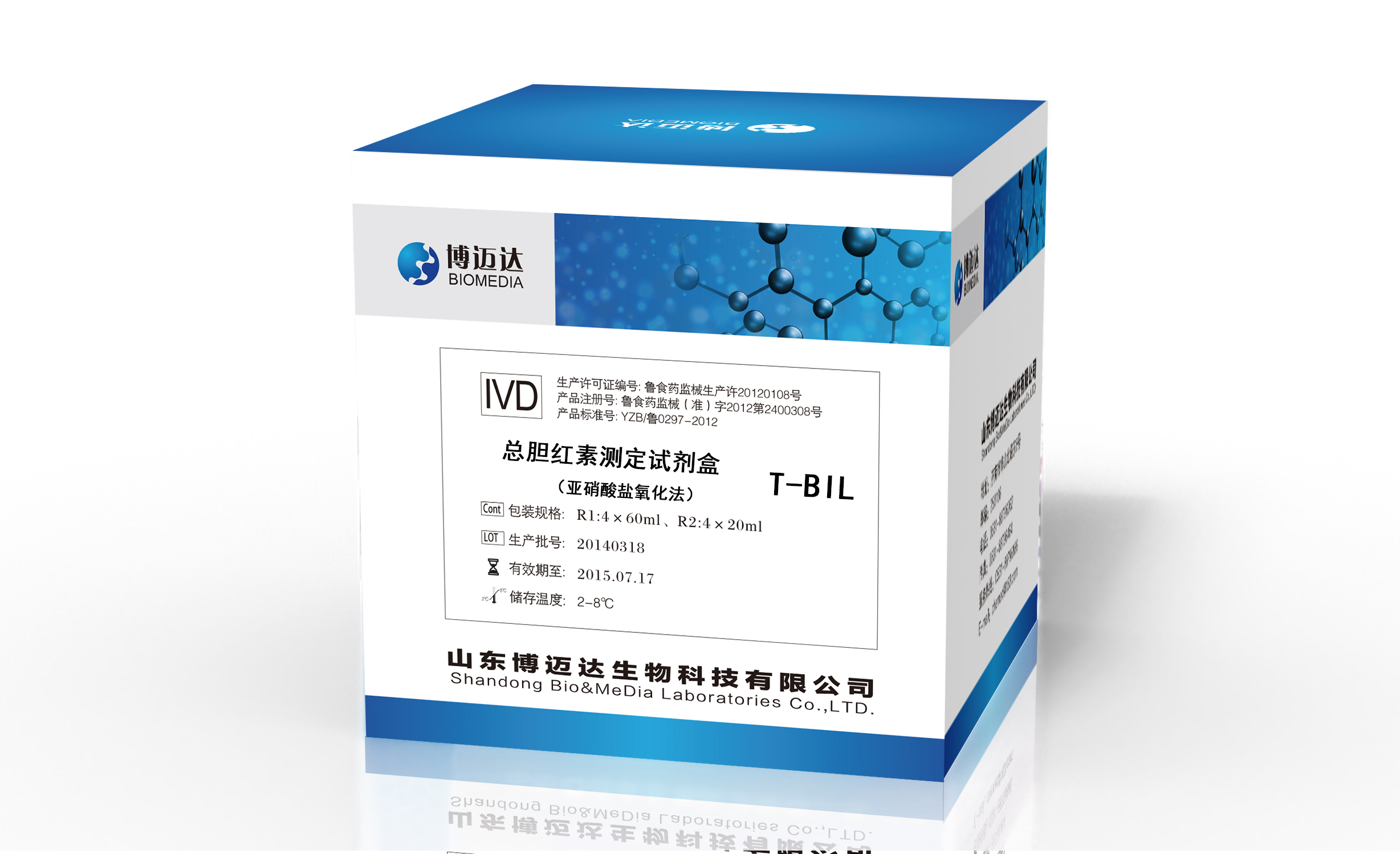
Testing Principle
In the presence of surfactant and accelerating agents, bilirubin can be oxidized by sodium nitrate and converted into biliverdin, which leads to a decrease in absorbance at 450 nm. Total bilirubin concentrations can be calculated from the absorbance change measured at 450 nm.
Product Features
1. Linear range of T-Bil level: [1, 684] μmol/L
Linear correlation coefficient ∣r∣≥0.990
Linear deviation ≤ ± 10.00%
2. Absorbance of blank ≤ 0.10
3. Sensitivity
The change in absorbance (ΔmA) ≥ 0.30 while testing the specific T-Bil sample of concentration of 83.1 μmol/L.
4. Accuracy
Relative deviation is within ±10%.
5. Precision
Intra CV% ≤ 5.0%; inter CV% ≤5.0%.
Technical Parameters
|
Temperature |
37℃ |
Optical path length (OPL) |
1.0 cm |
|
Main wavelength |
450 nm |
Secondary wavelength |
546 nm (Optional) |
|
Method |
End-point method (dual reagents) |
Reaction direction |
Negative |
|
Sample |
8 μL |
R1 |
240 μL |
|
R2 |
60 μL |
Reaction time |
300 s |
Reference range: 3.42 – 20.50 μmol/L
Packing Specifications
R1: 1×40 ml, R2: 1×10 ml
R1: 2×40 ml, R2: 1×20 ml
R1: 2×60 ml, R2: 2×15 ml
R1: 2×80 ml, R2: 2×20 ml
R1: 4×60 ml, R2: 4×15 ml
R1: 3×80 ml, R2: 3×20 ml
Storage and stability
Unopened: Store test kits at 2 - 8℃ protected from light. Stable to expiration date printed on individual vials (for 15 months).
Opened: Store test kits at 2 - 8℃ protected from light. Stable for 1 month if kept capped from original container and free from contamination.
Do not freeze the test kit.